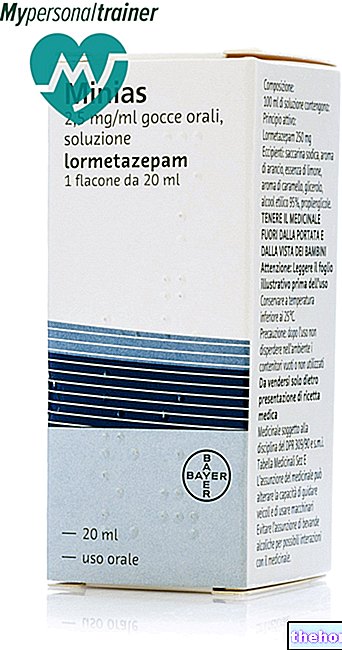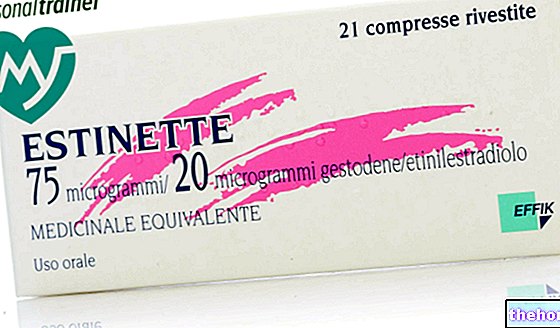Active ingredients: Tretinoin
Airol 0.05% cream
Airol 0.05% cutaneous solution
Why is Airol used? What is it for?
Therapeutic category
Retinoids for the treatment of acne.
Indications
Acne vulgaris, especially comedonic forms.
Contraindications When Airol should not be used
Hypersensitivity to tretinoin or to any of the excipients.
Acute dermatitis, including perioral dermatitis (eczema-like rash around the mouth).
In pregnancy and while breastfeeding.
In women who are planning a pregnancy.
Precautions for use What you need to know before taking Airol
- For the first applications (at the beginning of treatment), it is advisable to perform a repeated sensitivity test on a small area of skin (test area) for the possibility of intolerance (eg transient edema or eczema).
- Avoid contact with eyes, mouth, nostrils and mucous membranes. In case of contact, wash immediately and thoroughly with water.
- Particular attention is required for simultaneous treatments with other locally applied products, in particular with those that cause peeling, such as: Medicinal products for topical use containing sulfur, resorcinol, benzoyl peroxide or salicylic acid. Medicated soaps or soaps and cleaning products of the skin that cause peeling, soaps and cosmetics that dehydrate the skin a lot. Products with high alcohol content, astringent lotions, perfumes, colognes and pre- or after-shave lotions. If the patient has already been treated before the treatment with Airol with preparations that produce peeling of the skin, it is recommended to wait until the skin lesions have healed.
- Exposure to solar radiation, artificial ultraviolet light (eg sunlamps, solariums) and x-ray irradiation causes further irritation and should therefore be avoided. If the skin is sunburned, wait until the symptoms disappear before starting treatment with tretinoin preparations. Occupational groups exposed to the prolonged effects of sunlight and patients who have a familial predisposition to develop sunlight-induced skin damage or who have high levels of photosensitivity, should particularly observe this precaution. When exposure to intense solar radiation cannot be avoided, patients should be advised to use sunscreen products and to dress in protective clothing.
- In case of intense irritation at the application site during treatment, patients should be advised to reduce the frequency of application or stop treatment for a few days (see section 4.2).
- Avoid contact with abraded skin.
- Don't wash the affected area too frequently. Twice a day is enough. Dry without rubbing.
Interactions Which drugs or foods can modify the effect of Airol
Tell your doctor or pharmacist if you are taking or have recently taken any other medicines, even those without a prescription.
The simultaneous use of other drugs for topical use is not recommended as more severe skin reactions may appear, without any improvement in the therapeutic result. No interaction studies have been performed.
A simultaneous prolonged therapy with corticosteroids is not advisable, as it can favor the appearance of comedones.
Warnings It is important to know that:
Fertility, pregnancy and breastfeeding
Ask your doctor or pharmacist for advice before taking any medicine.
Pregnancy
Oral tretinoin is known to be teratogenic. In humans, topical data are limited.
In case of pregnancy, suspicion of pregnancy or if pregnancy is planned, do not use Airol.
If you become pregnant during treatment, stop applying the medicine and consult your doctor immediately.
Feeding time
It is not known whether tretinoin is excreted in human milk.
A risk to the newborns / infants cannot be excluded. Airol should not be used while breastfeeding.
Important information about some of the ingredients:
Airol 0.05% cream contains benzoic acid (E210). Slightly irritating to the skin, eyes and mucous membranes
Airol 0.05% cream contains butylated hydroxyanisole (E320). May cause local skin reactions (e.g. contact dermatitis) or irritation of the eyes and mucous membranes.
Airol 0.05% cutaneous solution contains propylene glycol. It can cause skin irritation.
Fertility
Women of childbearing potential should be made aware of the potential risk, should take suitable contraceptive measures during treatment with Airol and stop treatment for at least one menstrual cycle before planning a pregnancy. Effects on ability to drive and use machines Airol does not affect the ability to drive and use machines.
Dose, Method and Time of Administration How to use Airol: Posology
Dosage:
Based on the patient's tolerability, the daily dosage can vary from one to two daily administrations.
Before use it is necessary to perform a sensitivity test in a small area of skin to ascertain tolerance to the drug.
The product must be applied to the affected areas before going to bed, after having carefully cleaned and dried the application areas. In case of intense irritation at the beginning of the treatment, apply the cream every other day. Start with a daily administration, if no irritation is observed during the early stages of treatment, applications can be increased to 2 per day. The duration of treatment should be eight to twelve weeks at the indicated dosage.
During the first weeks of treatment, in addition to the initial irritation, the onset of papules and pustules may occur.
In the case of persistent irritative manifestations it may be necessary to temporarily interrupt the treatment.
The first symptoms of improvement, deductible from a decrease in the number of comedones, are observed on average after 4-8 weeks.
Discontinuation of treatment should be gradual.
Method of administration:
Cream:
Spread a thin layer of cream on the affected areas with your fingers.
Skin solution:
Apply a very thin layer of skin solution to the affected areas with a cotton pad.
Hands should be washed thoroughly after each application. Do not exceed the recommended dose.
Excessive use of the preparation only causes an unpleasant skin reaction without a better therapeutic result.
Overdose What to do if you have taken too much Airol
Due to the poor percutaneous absorption of tretinoin, systemic effects are unlikely to occur after topical administration.
Symptoms
The signs and symptoms of a possible overdose are acute dermatitis with edema and skin erosion.
Contact your doctor in case of excessive use of the preparation. In case of accidental intake of an excessive dose of Airol, notify your doctor immediately or go to the nearest hospital.
If you have any questions about the use of Airol, ask your doctor or pharmacist.
Side Effects What are the side effects of Airol
Like all medicines, Airol can cause side effects, although not everybody gets them.
Symptoms reported in clinical trials with tretinoin involved skin reactions in the treated areas: erythema, dryness, peeling and burning sensation which occur very frequently during the first weeks of treatment. These reactions vary in intensity, are generally transient, and can be controlled by reducing the dosage or frequency of applications.
At the same time, a temporary exacerbation of acne lesions can occur. Blackheads or papules can develop into purulent pustules before they heal. Both skin irritation and inflammation of the pustules can be part of the healing process.
Hypersensitivity reactions may occur in predisposed subjects.
Adverse reactions are listed below by System Organ Class and by frequency, using the following convention: very common (≥1 / 10), common (≥_ 1/100,
General disorders and administration site conditions
Very common: Application site erythema, application site dryness, application site exfoliation, application site burning, aggravation of acne.
Not known: Skin discoloration, Hypersensitivity reactions
Compliance with the instructions contained in the package leaflet reduces the risk of undesirable effects.
Reporting of side effects
If you get any side effects, talk to your doctor or pharmacist. This includes any possible side effects not listed in this leaflet. You can also report side effects directly via the national reporting system at https://www.aifa.gov.it/content/segnalazioni-reazioni-avverse. By reporting side effects you can help provide more information on safety. of this medicine.
Expiry and Retention
Expiry: see the expiry date printed on the package.
The expiry date refers to the product in intact packaging, correctly stored.
Warning: do not use the medicine after the expiry date shown on the package.
Cream: Do not store above 30 ° C
Do not use any cream left in the tube after 2 months from the first opening.
Medicines should not be disposed of via wastewater or household waste. Ask your pharmacist how to dispose of medicines you no longer use. This will help protect the environment.
KEEP THIS MEDICINAL PRODUCT OUT OF THE SIGHT AND REACH OF CHILDREN.
Composition and pharmaceutical form
Composition
cream:
glycerol stearate / Ceteareth 20, sorbitol solution 70%, cetyl ester wax, perhydrosqualene, butylhydroxyanisole (E320), disodium edetate, magnesium sulphate heptahydrate, benzoic acid (E210), purified water.
skin solution:
d, l-α-tocopherol, alcohol, propylene glycol.
Pharmaceutical form and content
Airol 0.05% cream - 20 g tube
Airol 0.05% cutaneous solution - 50 ml bottle
Source Package Leaflet: AIFA (Italian Medicines Agency). Content published in January 2016. The information present may not be up-to-date.
To have access to the most up-to-date version, it is advisable to access the AIFA (Italian Medicines Agency) website. Disclaimer and useful information.
01.0 NAME OF THE MEDICINAL PRODUCT
AIROL
02.0 QUALITATIVE AND QUANTITATIVE COMPOSITION
Airol cream
One gram of cream contains 0.5 mg of tretinoin (Vitamin A-acid).
Excipients with known effects:
One gram of cream contains 1 mg of benzoic acid (E210), 0.2 mg of butylated hydroxyanisole (E320).
For the full list of excipients, see section 6.1.
Airol cutaneous solution
One milliliter of solution contains 0.5 mg of tretinoin (Vitamin A-acid).
Excipients with known effects:
One milliliter of solution contains about 0.4 g of propylene glycol.
For the full list of excipients, see section 6.1.
03.0 PHARMACEUTICAL FORM
Cream.
Skin solution.
Airol cream:
Light yellow cream, opaque, soft and homogeneous.
Airol cutaneous solution:
Light green to yellow liquid with an alcoholic odor.
04.0 CLINICAL INFORMATION
04.1 Therapeutic indications
Acne vulgaris, especially comedonic forms.
04.2 Posology and method of administration
Dosage:
Based on the patient's tolerability, the daily dosage can vary from one to two daily administrations.
Before use it is necessary to perform a sensitivity test in a small area of skin to ascertain tolerance to the drug.
The product must be applied to the affected areas before going to bed, after having carefully cleaned and dried the application areas. In case of intense irritation at the beginning of the treatment, apply the cream every other day.
Start with a daily administration; if no irritation is observed during the early stages of treatment, applications can be increased to 2 per day.
The duration of treatment should be eight to twelve weeks at the indicated dosage.
During the first weeks of treatment, in addition to the initial irritation, the onset of papules and pustules may occur.
In the case of persistent irritative manifestations it may be necessary to temporarily interrupt the treatment.
The first symptoms of improvement, deductible from a decrease in the number of comedones, are observed on average after 4-8 weeks.
Discontinuation of treatment should be gradual.
Method of administration:
Cream:
Spread a thin layer of cream on the affected areas with your fingers.
Skin solution:
Apply a very thin layer of skin solution to the affected areas with a cotton pad.
Hands should be washed thoroughly after each application.
Do not exceed the recommended dose.
Excessive use of the preparation only causes an unpleasant skin reaction without a better therapeutic result.
04.3 Contraindications
- Hypersensitivity to the active substance or to any of the excipients listed in section 6.1;
- In case of acute dermatitis, including perioral dermatitis;
- During pregnancy and breastfeeding;
- In women who are planning a pregnancy.
04.4 Special warnings and appropriate precautions for use
- For the first applications (at the beginning of treatment), it is advisable to perform a repeated sensitivity test on a small area of skin (test area) for the possibility of intolerance (eg transient edema or eczema).
- Avoid contact with eyes, mouth, nostrils and mucous membranes. In case of contact, wash immediately and thoroughly with water.
- Particular attention is required for simultaneous treatments with other locally applied products, in particular with those that cause flaking, such as:
§ Topical medicinal products containing sulfur, resorcinol, benzoyl peroxide or salicylic acid
§ Medicated soaps or soaps and skin cleansing products that cause peeling, soaps and cosmetics that greatly dehydrate the skin
§ Products with a high alcohol content, astringent lotions, perfumes, colognes and pre- or after-shave lotions.
If the patient has already been treated with preparations that produce peeling of the skin prior to treatment with Airol, it is recommended to wait until the skin lesions have healed.
- Exposure to solar radiation, artificial ultraviolet light (eg sunlamps, solariums) and x-ray irradiation causes further irritation, therefore should be avoided. If the skin is sunburned, wait until the symptoms disappear before starting treatment with tretinoin preparations. Occupational groups exposed to the prolonged effects of sunlight and patients who have a familial predisposition to develop sunlight-induced skin damage or who have high levels of photosensitivity, should particularly observe this precaution. When exposure to intense solar radiation cannot be avoided, patients should be advised to use sunscreen products and to dress in protective clothing.
- In case of intense irritation at the application site during treatment, patients should be advised to reduce the frequency of application or stop treatment for a few days (see section 4.2).
- Avoid contact with abraded skin.
- Do not wash the affected area too frequently. Twice a day is enough. Dry without rubbing.
Important information about some of the ingredients:
Airol 0.05% cream contains benzoic acid (E210). Slightly irritating to the skin, eyes and mucous membranes.
Airol 0.05% cream contains butylated hydroxyanisole (E320). May cause local skin reactions (e.g. contact dermatitis) or irritation of the eyes and mucous membranes.
Airol 0.05% cutaneous solution contains propylene glycol. It can cause skin irritation.
04.5 Interactions with other medicinal products and other forms of interaction
The simultaneous use of other drugs for topical use is not recommended as more severe skin reactions may appear, without any improvement in the therapeutic result.
No interaction studies have been performed.
A simultaneous prolonged therapy with corticosteroids is not advisable, as it can favor the appearance of comedones.
04.6 Pregnancy and lactation
Pregnancy
Oral tretinoin is known to be teratogenic.
In animals, studies performed to evaluate the embryonic developmental toxicity of tretinoin after topical application have shown that the effects are limited to ossification delays, which may not be direct effects, but the result of a toxic effect on the mother (see section 5.3. ).
In humans, there are limited topical data and, consequently, topical tretinoin is contraindicated during pregnancy and in women planning pregnancy (see section 4.3).
Women of childbearing potential should be warned of the potential risk to the fetus in case of pregnancy during treatment with tretinoin and informed about the need to use effective contraceptive measures during treatment and about the need to stop the product for at least one menstrual cycle before to plan a pregnancy.
If pregnancy is suspected, a negative result with a pregnancy test with a sensitivity of at least 50 mIU / mL for human chorionic gonadotropin (hCG) should be obtained within 2 weeks prior to initiation of therapy.
Feeding time
It is not known whether tretinoin is excreted in human milk.
A risk to the newborns / infants cannot be excluded.
Airol should not be used while breastfeeding.
Fertility
There is no information on the possible effects of tretinoin on male and female fertility.
04.7 Effects on ability to drive and use machines
Airol does not affect the ability to drive and use machines.
04.8 Undesirable effects
Symptoms reported in clinical trials with tretinoin involved skin reactions in the treated areas: erythema, dryness, peeling and burning sensation which occur very frequently during the first weeks of treatment. These reactions vary in intensity, are generally transient, and can be controlled by reducing the dosage or frequency of applications.
At the same time, a temporary exacerbation of acne lesions can occur. Blackheads or papules can evolve into purulent pustules before healing.
Both skin irritation and inflammation of the pustules can be part of the healing process.
Hypersensitivity reactions may occur in predisposed subjects.
Adverse reactions are listed below by System Organ Class and according to frequency, using the following convention: very common (≥1 / 10), common (≥1 / 100,
Reporting of suspected adverse reactions
Reporting of suspected adverse reactions occurring after authorization of the medicinal product is important as it allows continuous monitoring of the benefit / risk balance of the medicinal product. Healthcare professionals are asked to report any suspected adverse reactions via the national reporting system. "address https://www.aifa.gov.it/content/segnalazioni-reazioni-avverse.
04.9 Overdose
Due to the poor percutaneous absorption of tretinoin, systemic effects are unlikely to occur after topical administration.
Symptoms
The signs and symptoms of a possible overdose are acute dermatitis with edema and skin erosion.
Management
In case of overdose due to increased frequency of application or excessive application, the preparation should be used by reducing the frequency or stopped for a few days.
05.0 PHARMACOLOGICAL PROPERTIES
05.1 Pharmacodynamic properties
Pharmacotherapeutic group: retinoids for the treatment of acne.
ATC code: D10AD01.
The pharmacological effects of vitamin A-acid on animal skin have been studied by several authors.
After applying an ointment containing 0.1% vitamin A-acid to the ear skin of guinea pigs, there is an increase in the proliferation of epidermal cells and an increase in their enzymatic activities. After 3 days of application, epidermal hyperplasia reaches its maximum, while the "turnover" of basal cells is considerably accelerated.
Local application of 0.1% vitamin A-acid, repeated daily, causes a gradual decrease in epidermal reactivity. The degree of this reactivity was more evident with the application of vitamin A-acid, rather than with that of vitamin A in its alcoholic or aldehyde form; the anti-keratinizing effect of the 0.1% vitamin A-acid in ointment is due to the reduction of keratinization, which derives from the increased proliferation of epidermal cells.
Kligman, Plewig, Fulton have carried out several studies on humans with autoradiographic techniques. They noted, after 2-11 days from the application of vitamin A-acid on the skin, a percentage increase of marked nuclei in the epidermis. This phenomenon resulted. evident above all in the basal and spinous layers, and was interpreted by the authors as an expression of the "increased" turnover "at that level.
Thanks to its mechanism of action, Airol not only exfoliates an exfoliating effect, but also stimulates the normal mitotic activity of the epidermis, reduces the thickness of the stratum corneum and above all determines a proliferation of the epithelium at the level of comedones.
Airol gives good cosmetic results and can be combined with dietary regulations and oral medications (for example, prescription antibiotics).
05.2 "Pharmacokinetic properties
In man, Rietz quantitatively assessed the pharmacokinetics of vitamin A-acid, using a labeled compound, and established that, when the active ingredient is applied to the skin, only a very small proportion of it (on average 6%) is absorbed and rapidly eliminated, mostly in the urine (4.5%) and a small part in the faeces.
Studies have also been conducted to clarify whether the efficacy of vitamin A-acid on the skin is dependent on its structural characteristics or not. Sani et al., In particular, have experimentally found, in the embryo of the chicken, the existence, a level of the metatarsal skin, of a protein (carrier) able to electively make vitamin A-acid and not vitamin A penetrate into the epidermis in alcoholic or aldehyde form. This appeared to be related to the intense pharmacological activity that, at that level, vitamin A-acid exerts in experimental pathological situations.
05.3 Preclinical safety data
In non-clinical studies performed using topical applications, effects were observed only at exposures considered sufficiently in excess of the maximum human exposure, indicating little relevance to clinical use.
Skin toxicity studies for up to 13 weeks were conducted in rats and rabbits. It was concluded that tretinoin did not induce systemic toxicity but did cause dose-dependent skin damage (irritation to ulceration).
Reproductive toxicity:
Reproductive studies conducted in rats and rabbits following topical application of tretinoin have shown a consistent lack of teratogenic potential but it was possible to observe dose-related local and systemic toxicity in the mother, as evidenced by delayed ossification.
Oral doses above 1-2 mg / kg in mice and rats and 0.7 mg / kg in rabbits induced maternal toxicity and teratogenicity. Developmental embryofoetal responses to oral tretinoin were phase- and dose-dependent, leading to craniofacial defects and obvious central nervous system defects, limb and genitourinary abnormalities.
06.0 PHARMACEUTICAL INFORMATION
06.1 Excipients
Cream:
glycerol stearate / Ceteareth 20, sorbitol solution 70%, cetyl ester wax, perhydrosqualene, butylhydroxyanisole (E320), disodium edetate, magnesium sulphate heptahydrate, benzoic acid (E210), purified water.
Skin solution:
d, l-α-tocopherol, alcohol, propylene glycol.
06.2 Incompatibility
They are not known.
06.3 Period of validity
Cream: 3 years. After the first opening of the tube: 2 months.
Skin solution: 4 years.
06.4 Special precautions for storage
Cream: do not store above 30 ° C.
Skin solution: no particular storage conditions.
06.5 Nature of the immediate packaging and contents of the package
Cream: the product is packaged in a flexible aluminum tube, internally protected by lacquer, and closed with a plastic screw cap.
Skin solution: the cutaneous solution is contained in a yellow glass bottle, closed with a plastic screw cap.
The tube and the bottle are contained in a cardboard box together with the package leaflet.
06.6 Instructions for use and handling
No special instructions for disposal.
07.0 MARKETING AUTHORIZATION HOLDER
Pierre Fabre Italia S.p.A. - Via G.G. Winckelmann, 1 - Milan.
08.0 MARKETING AUTHORIZATION NUMBER
20 g tube of 0.05% cream cod. n. 023244015
50 ml bottle 0.05% cutaneous solution cod. n. 023244027
09.0 DATE OF FIRST AUTHORIZATION OR RENEWAL OF THE AUTHORIZATION
Renewal: June 2010
10.0 DATE OF REVISION OF THE TEXT
February 2015




























